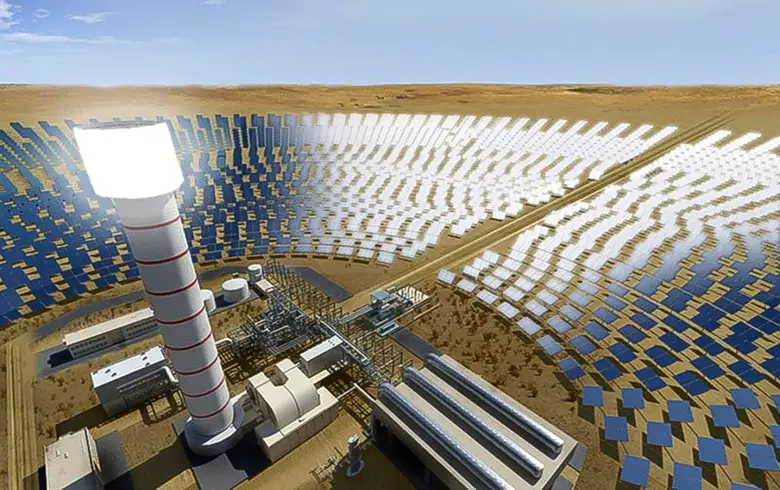NamPower generation projects chief Grant Muller put up the national power company’s now-finalized plans for a CSP project in Namibia, ranging from 50 MW to 130 MW including storage, at the 2021 SolarPACES Conference. It is set for its first CSP auction in 2022 after four years of preparation. Namibia possesses some of the world’s greatest solar resources, with DNIs as high as 3214 kWh per square meter per year (3,214 kWh/m2a). Its current installed capacity is 680 MW, which serves a population of 2.5 million people. Nearly all (517 MW) is provided by renewables (hydropower, solar PV, and wind). However, a tiny fraction (122 MW) is still supplied by coal, and it now obtains power from the coal-heavy grid of neighboring South Africa. Its goals are to reduce reliance on imports and coal and improve the resilience of its renewable grid.
Also Read: Namibia announces preferred bidder for US$9.4bn green hydrogen project
Bidding details for CSP project in Namibia
Except that it must be dry cooled, NamPower is unconcerned with the basic CSP technology. The chosen bidder is anticipated to complete the project by 2025. Between $600 million to $1 billion in US dollars is projected to be spent. NamPower anticipates a “construct, own, operate, transfer” plan that will transfer to NamPower over 25 years, obtained through a public-private partnership procedure under Namibia’s new Public-Private Partnership Act, according to Muller.
Muller also stated that the CSP project should ideally be structured to target peak demand periods to give the optimum complementarity to daytime solar PV and during the dry season for hydropower, which runs from April to October in the Southern Hemisphere winter. So, in addition to hydropower, a second dispatchable renewable would ideally round out a renewable grid system. He defined the proposed policy design as a cross between Morocco’s successful MASEN model and South Africa’s REIPPP approach. NamPower, like MASEN, has de-risked the project by locating various sites with strong solar resources and measuring the DNI over three years using satellite and ground measurement data. Muller intends to lower the consumer’s energy bill by lowering development expenses in this way.
Funding CSP project in Namibia
Unlike MASEN, the developer is responsible for securing funding. There is a demand for local content, similar to the REIPPP, which may be met by labor for earthworks, cement building, transportation, and some social development. The developer is also in charge of the power lines’ construction, operation, and maintenance. NamPower’s role in the project will now be to procure the winning bidder and developer under the PPP Act, as well as to assist the winner in obtaining the necessary approvals, clearances, and permits for developing a project, to provide a developed and permitted project site, to offtake the power generated, and to monitor project performance and contractual obligations. Electricity demand and the current technological developments, project hazards, and contingent liabilities will be analyzed throughout the feasibility assessment to establish the final project objectives and risk allocation.
Given that the plant would provide dispatchable electricity, NamPower will demand that the developer guarantee the plant’s performance in exchange for unavailability or capacity payments if NamPower is to be the project’s anchor off-taker. The next stage, according to Muller, is to draw up the RFP for 2022 when a Transaction Advisor is appointed.

